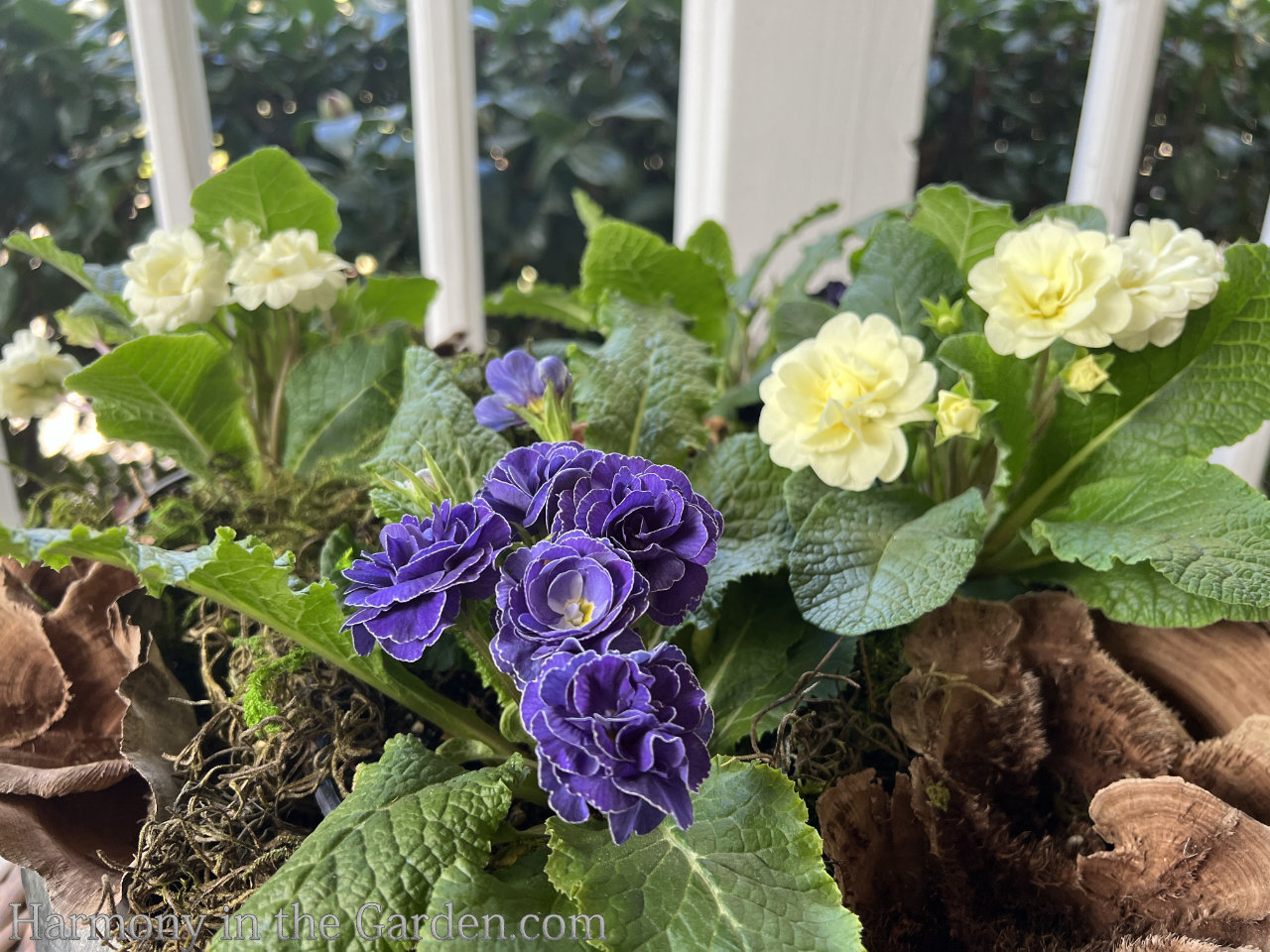
Nothing says ‘spring is on its way’ like seeing row after row of pretty primroses arrive at the nursery.
The botanical name of a primrose is primula, which comes from the Latin word ‘primus,’ meaning ‘first.’ This is the perfect name for them, as they’re the trailblazers of the early spring garden. They’ll even bloom in January in warmer climates (like my zone 9 garden.)
Another fun fact: their common name is ‘cowslip’, which has nothing to do with a cow’s lip but stems from the Old English word ‘sloppe’, which means mud or dung. This is a clue as to where they’re found in nature, providing spots of cheery color in muddy, dung-rich fields.
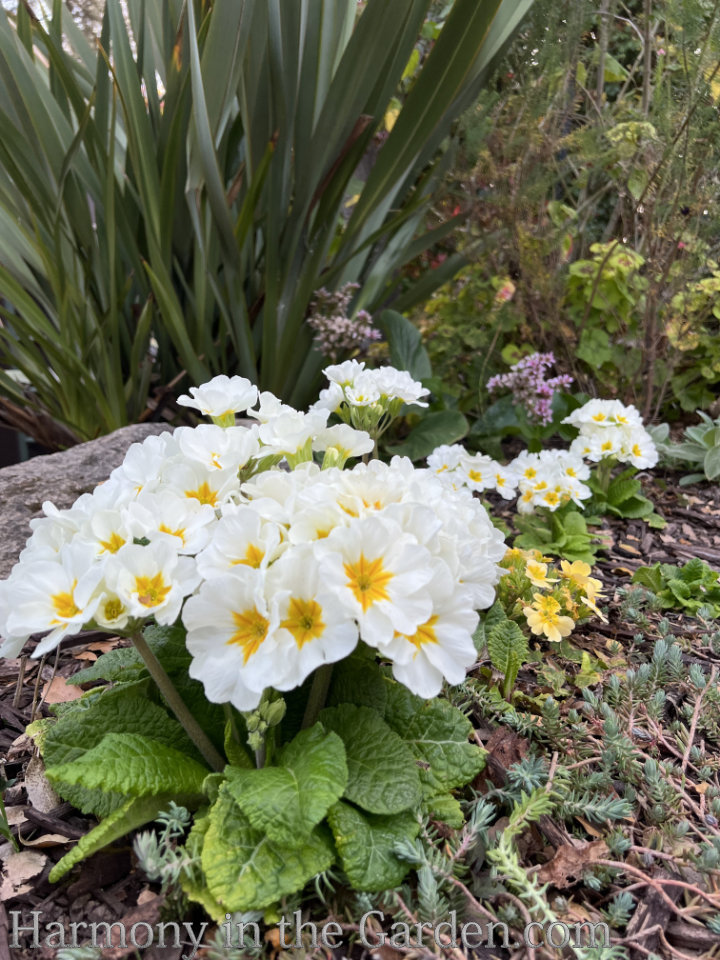
However, despite loving moisture, I’ve found many primroses are incredibly heat and drought-tolerant once established.
Planted in areas that receive morning sun, once the heat of summer arrives, they die back, retreating underground until cooler weather arrives once again.
I also mulch my garden heavily, which primroses appreciate.
A thick layer of mulch helps reduce drastic temperature swings while holding in as much precious water as possible.

Primula is a HUGE genus with more than 430 species. I love them all, even the most common variety, the primula vulgaris, found in nurseries everywhere.
The common ones have been bred into squatty little mounds with a carnival-like range of colors.
Spotting them in the nurseries always reminds me of the colorful bowls of jelly beans my grandmother would set out at Easter.
But because they’re so common, many gardeners look down on the poor little primrose, often associating them with outdated, ordinary landscapes.
Which is such a shame as it doesn’t have to be this way! With a little forethought and planning, primroses can shine in the early spring garden.
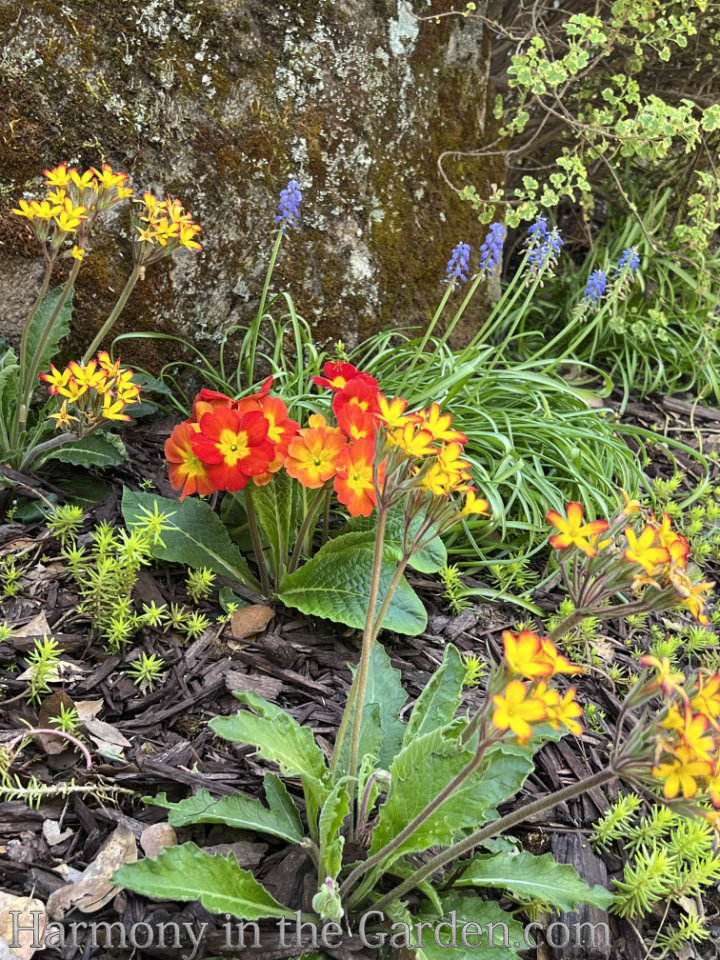
I prefer planting primroses en masse, either using a single color or those within the same color family.
In this example, I’ve planted primulas in shades of orange, yellow, and my favorite oakleaf primula with gold flowers tipped with orange (more about this beauty, below.)
Planting this way results in a more relaxed, naturalistic design, more in line with how you might find them growing in the English countryside.
They also look fantastic blooming among other early spring-blooming bulbs like snow-drops, narcissus, or muscari.
Not only do primroses provide a little cheer on a gloomy, rainy day, but primroses are also an early source of nectar for pollinators, including brave bees and ladybugs who venture out into the cold.
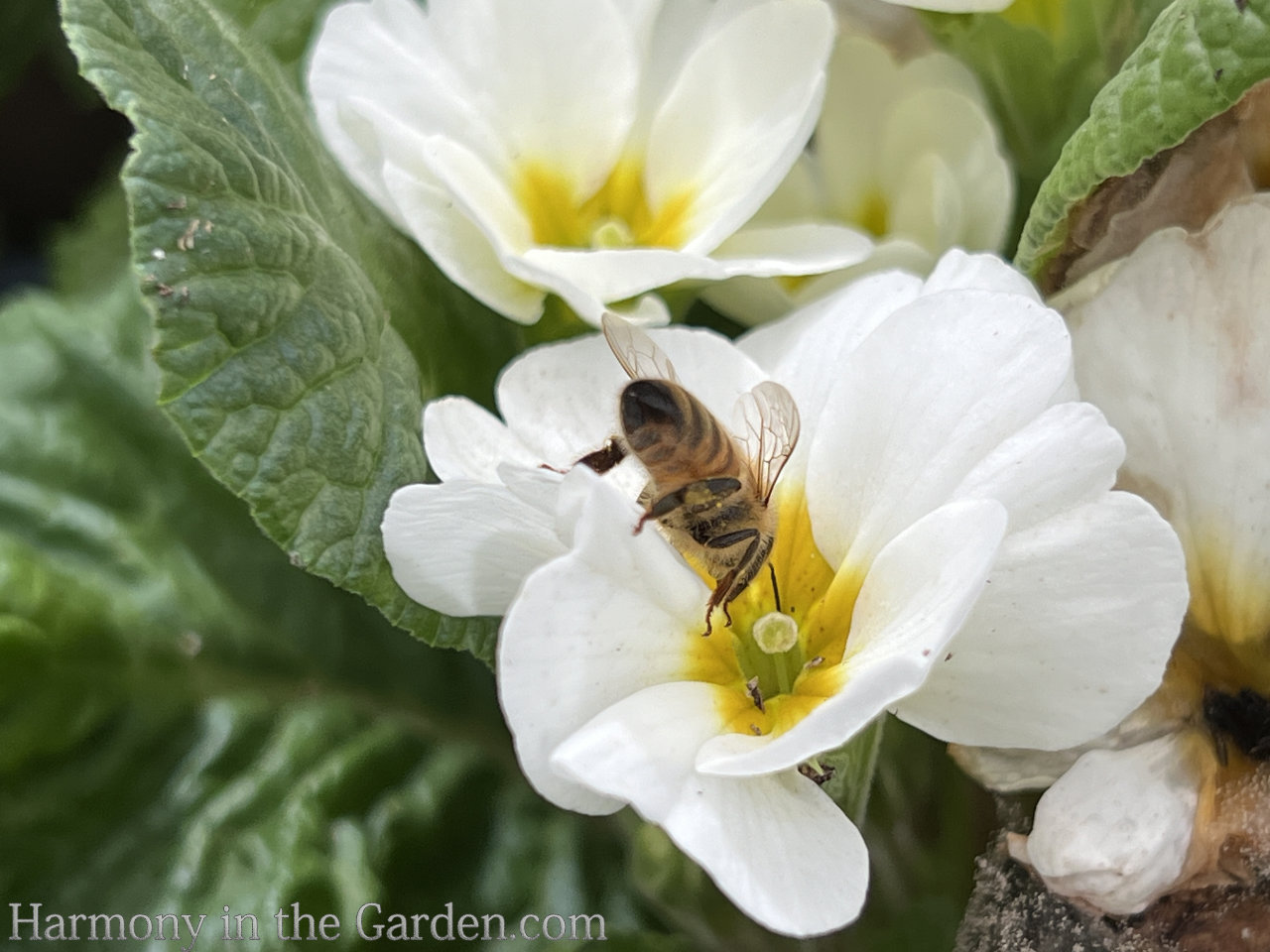
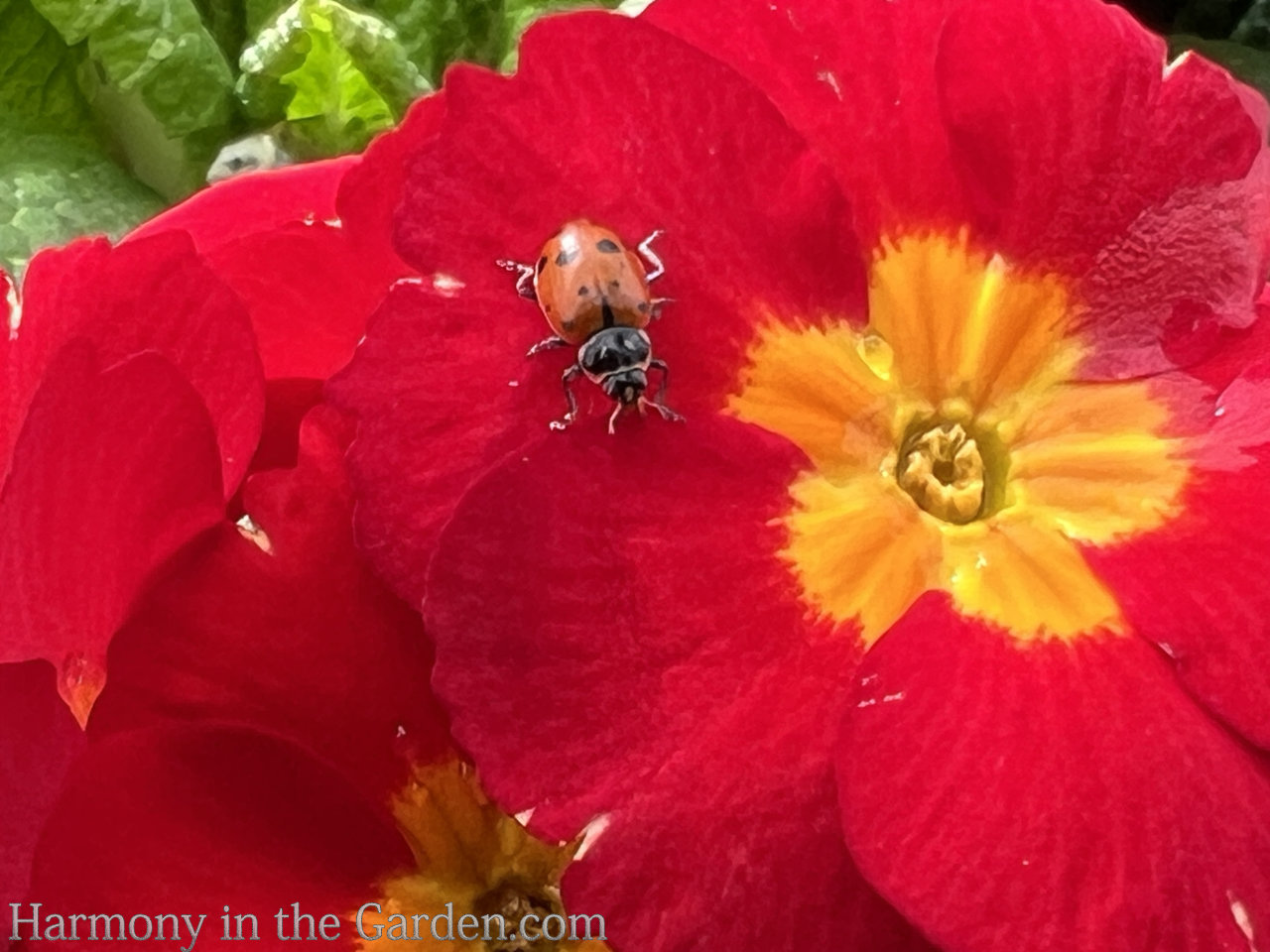

If you want your primroses to re-seed around your garden, don’t be so quick to pick off the dead flowers. This is a fantastic way to get more plants that grow true to color, helping to create that perfect drift.
And should a particular plant get too large and crowded, it’s very easy to divide it in early spring.
Just dig up the cluster and shake off the soil to expose the roots.
Then gently pull them apart, and voila, you have several new little primulas!
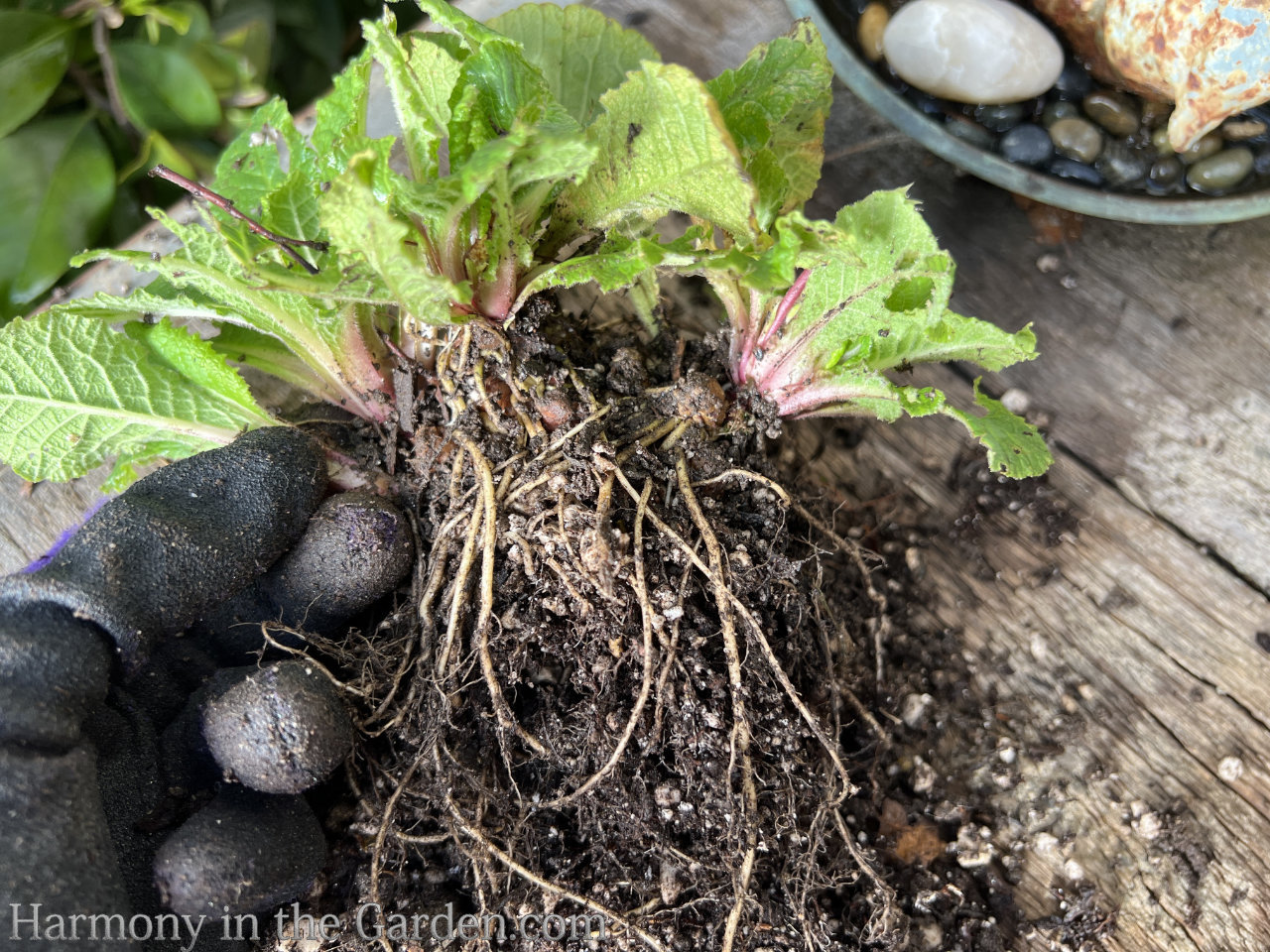
Below are a few of my favorite varieties that have reliably returned in my garden, year after year.
Primula vulgaris ‘Belarina Amethyst Ice’ and ‘Belarina Cream’
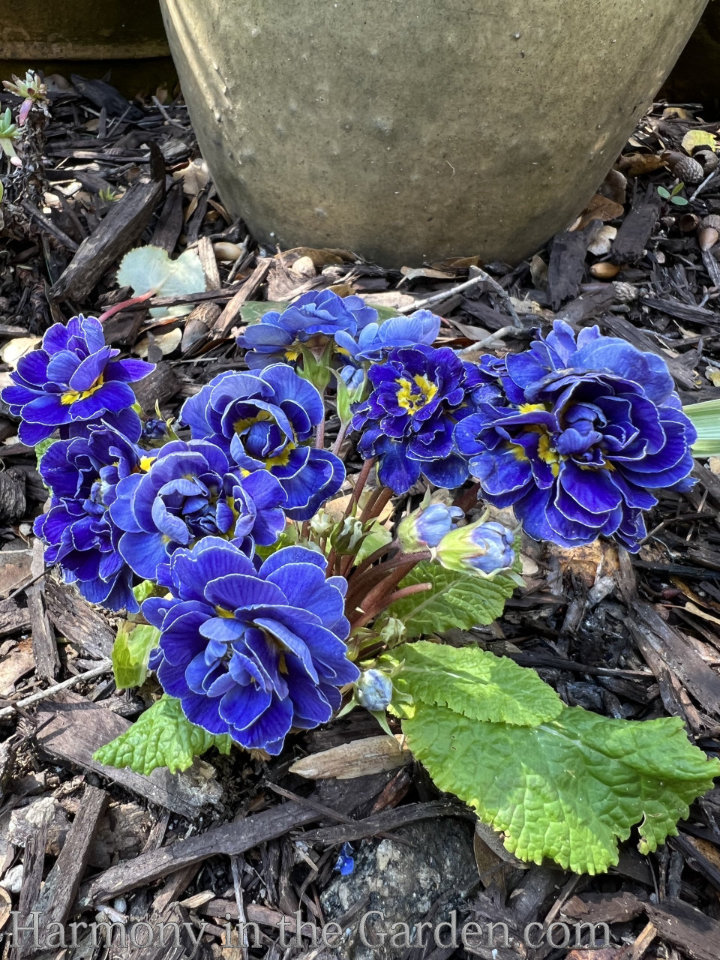
Several colors are available in the Belarina series, and besides their stunning flowers, they tend to be much more cold AND heat tolerant than other varieties.
I can certainly vouch for the heat-aspect, as they return every spring (after going through my super hot summers) bigger and better than before.
The ‘Amethyst Ice’ has blue-lavender flowers that are double in form, with petals edged with the thinnest line of white.
I usually avoid planting flowers in the double form, as the single-petal varieties are much easier for pollinators to access.
But in this instance, I couldn’t help myself. That’s okay, little bees; just move on to the larger patch of single-petaled varieties and feast away.
The ‘Belarina Cream’ (pictured in the very first photo) looks like a miniature gardenia with the softest shade of creamy white.
Primula vulgaris ‘Oakleaf Yellow Picotee’
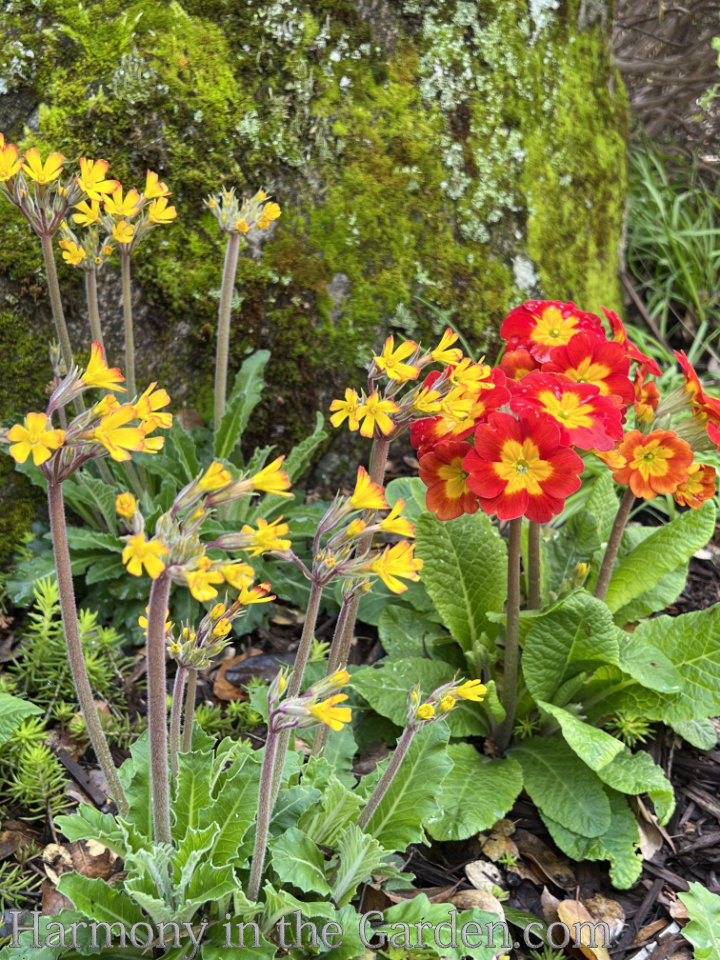
I absolutely love this variety of primrose for several reasons.
For one, it grows taller than most other vulgaris varieties, up to 18 or more!
The flowers are unique, as well. They’re daintier than the ordinary primrose, with small yellow petals outlined in orange and held in clusters on top of tall, sturdy stems.
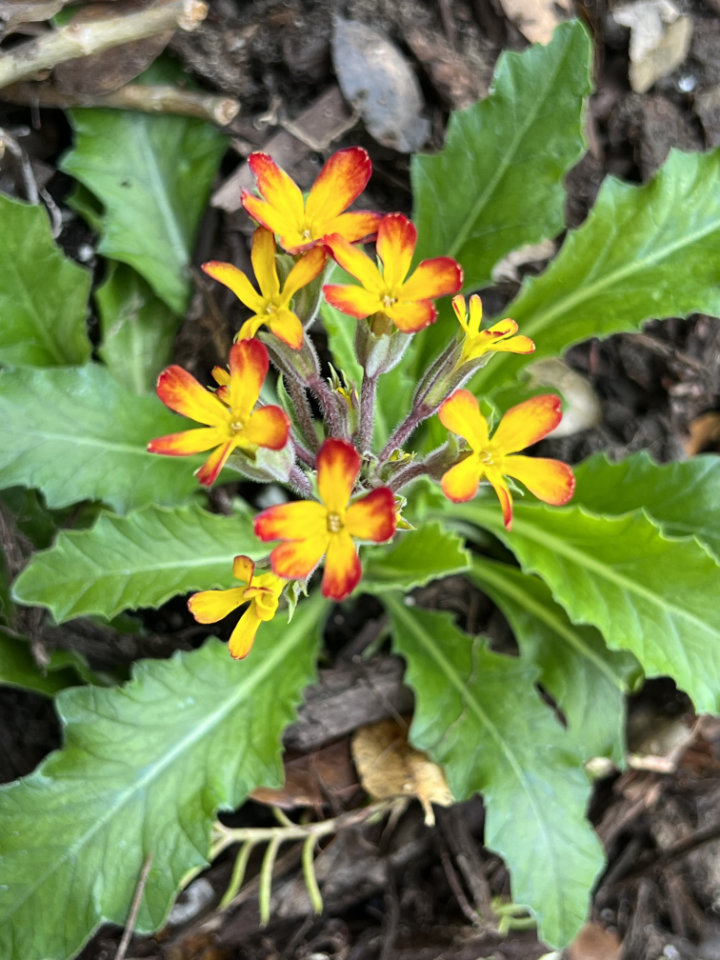
And unlike other primroses, with their oversized oval, crinkly leaves the ‘Oakleaf’ has leaves that resemble – well – an oakleaf!
Another thing that sets these primroses apart from others is that they’re not only quite hardy, but their foliage doesn’t seem to get quite as ravaged by slugs and snails as others do!
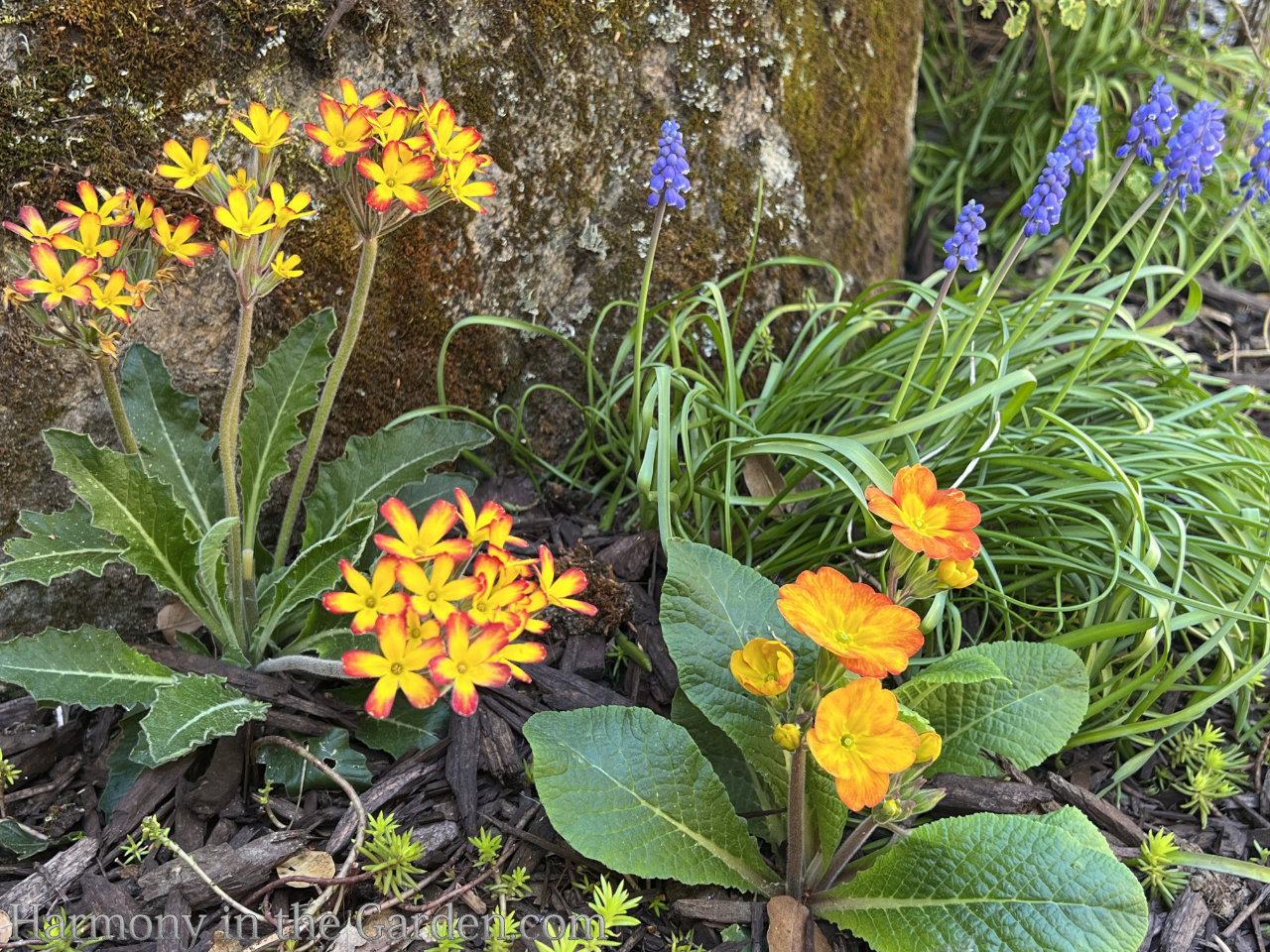
Primula vulgaris ‘Drumcliff’ (Irish Primrose)
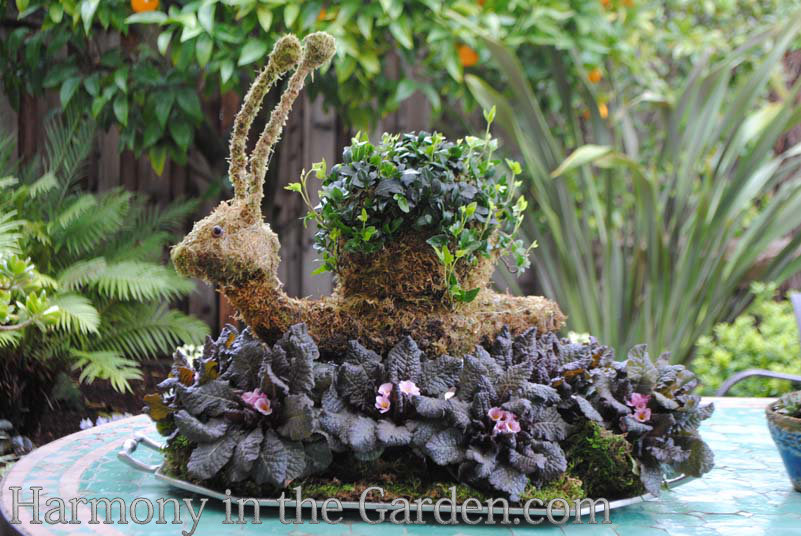
Oh, how I wish I still had my Irish Primroses! These were given to me long ago by a good friend and plant breeder Patrick Fitzgerald.
These amazing primulas are a hybrid from Joe Kennedy’s breeding program, featuring foliage in unusual shades of maroon.
Unfortunately, they didn’t survive the move from my previous garden to my new one in Granite Bay.
And to make matters worse, I can’t seem to find any anywhere to buy more.
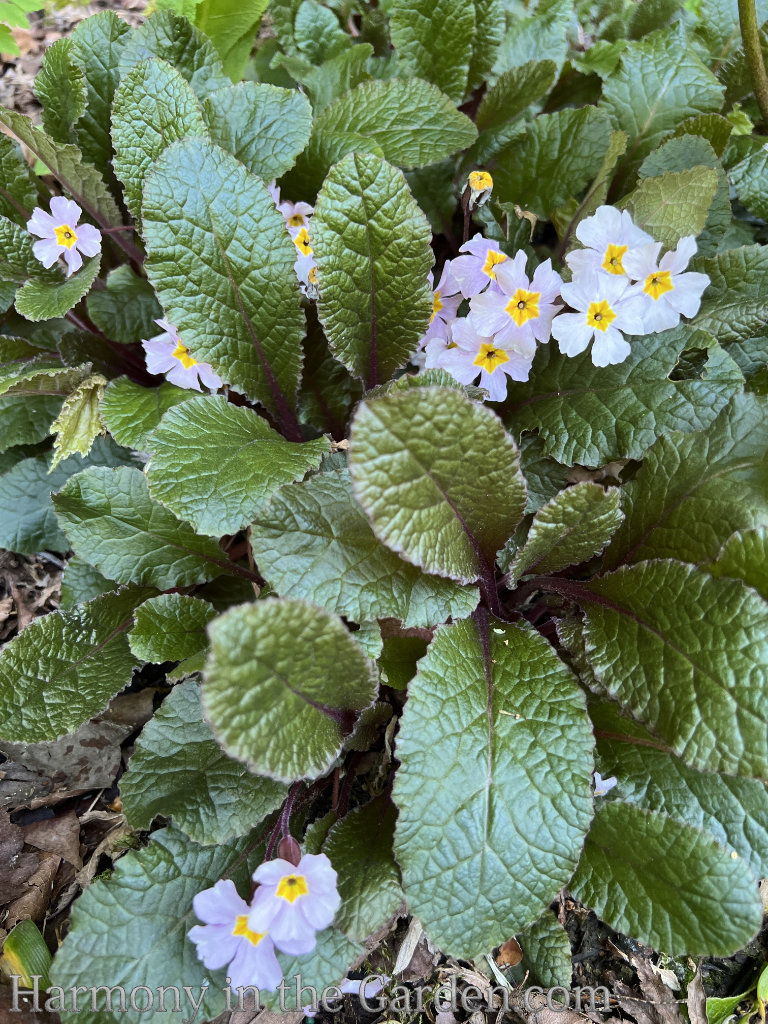
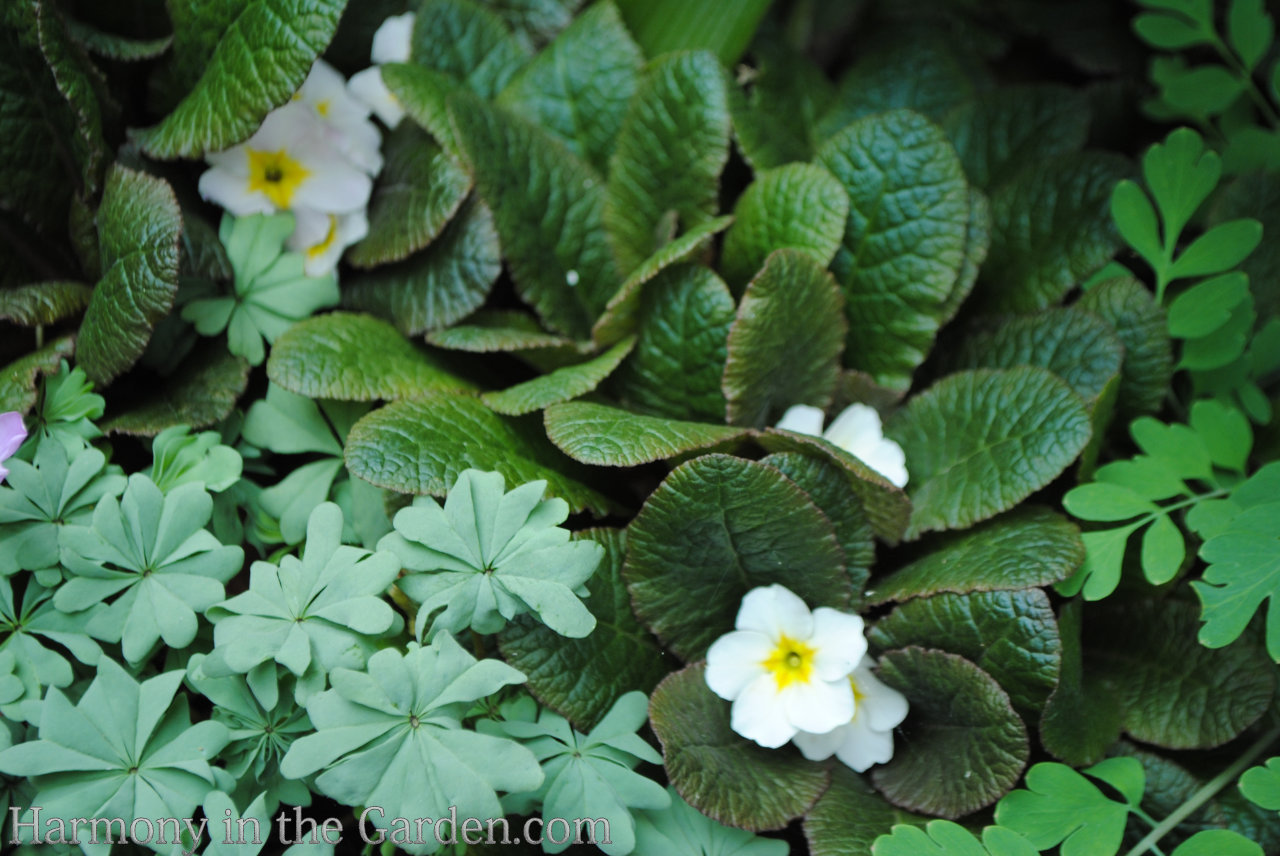
However, as you can see in the photo (left) the primrose vulgaris ‘Guinevere’ also has maroon-tinged foliage (though not nearly as dark as the Irish Primrose), and is easier to find, making it a good substitute.
Primula japonica (Candelabra Primrose)
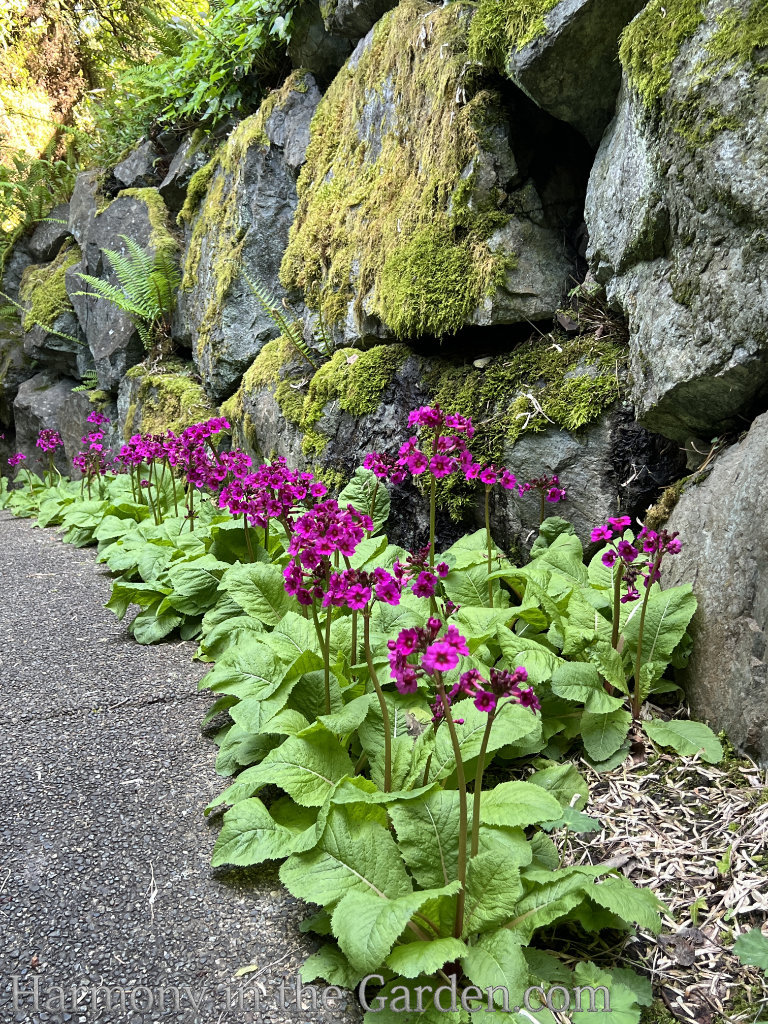
Several primulas are called the ‘Candelabra Primrose’ (primula japonica, which I’ll talk about below, or the primula pulverulenta, whose stems are a soft downy-white, or even primula bulleyana.)
But one thing they all have in common is 1) they require rich, moist soil, and 2) they have a stunning display of tiered rings of flowers that rise on tall, sturdy stems, reaching heights of 18 to 30 inches.
The graceful flowers are complemented by broad, lush, and gently crinkled leaves.
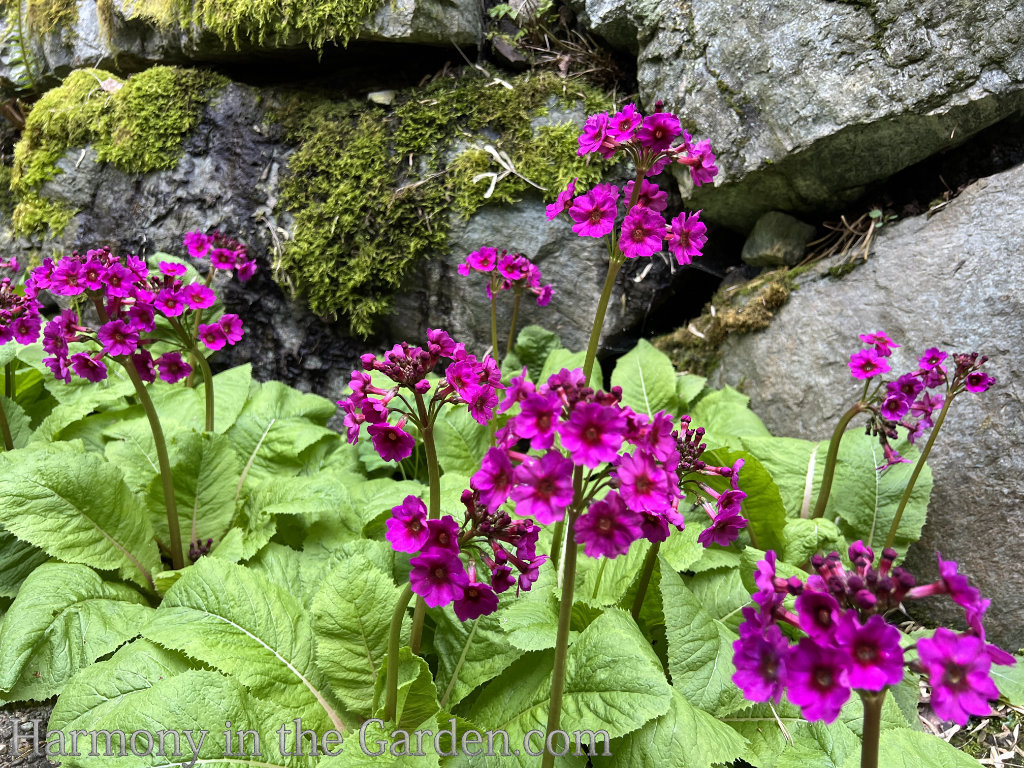

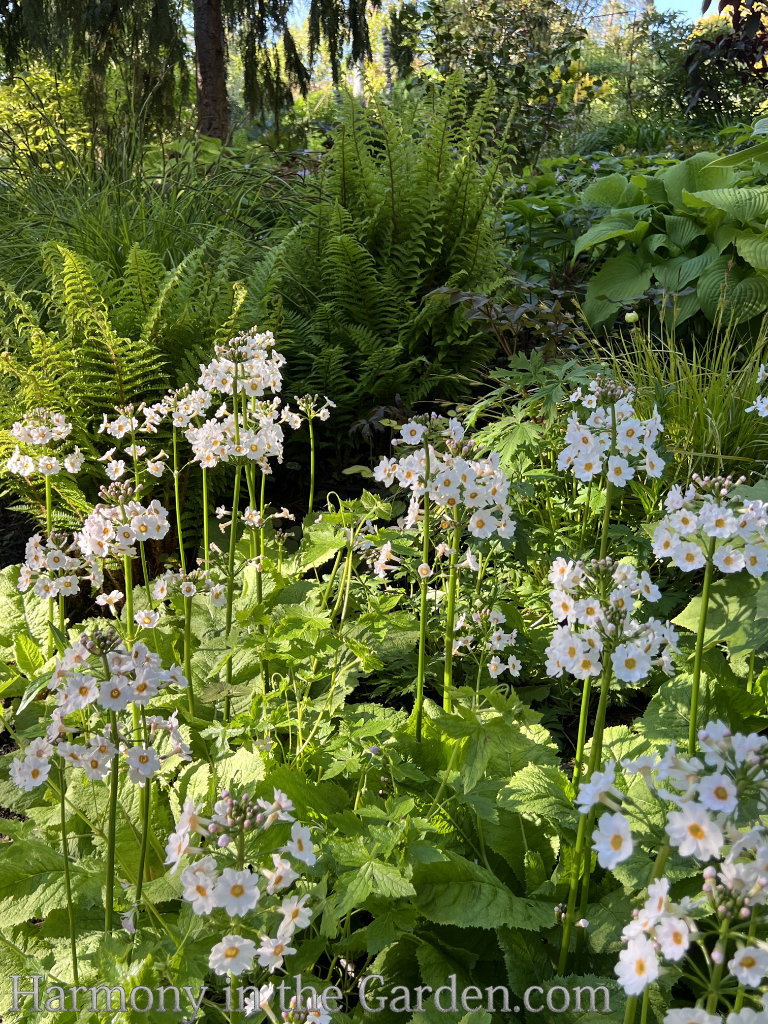
Primula polyanthus (Gold Laced Group)
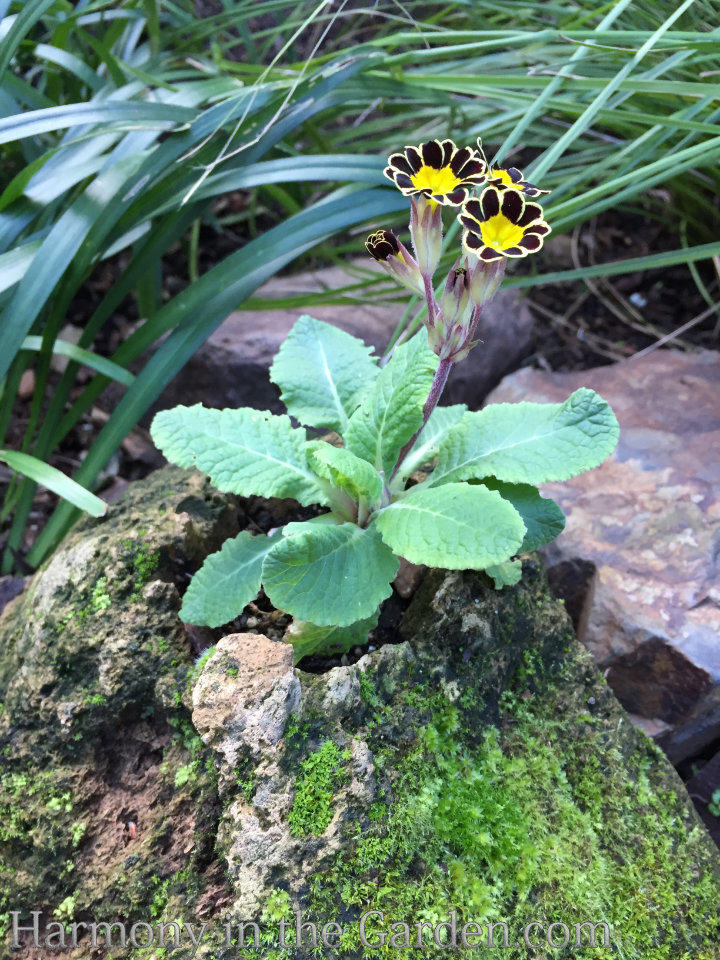
Alas, the polyanthus primulas guarantee certain heartbreak for me when planted in my hot and dry climate.
Despite the research I’ve found online, which says it can tolerate drought a little better than other varieties, that’s definitely not the case in my situation.
But I’m including it here because it’s such an amazing, gorgeous primrose that if there’s even the slightest chance you can grow it in your garden, you should certainly try!
In the meantime, I’ll use it as a cherished (albeit temporary) spring plant for my windowsill.
For more information on primroses, Gardeners World has an excellent article along with how-to videos from our beloved Monty Don.
If you’d like to try some for yourself, Edelweiss Perennials has the best selection I’ve seen.
And finally, click here for an updated list of my favorite late-winter flowering plants.
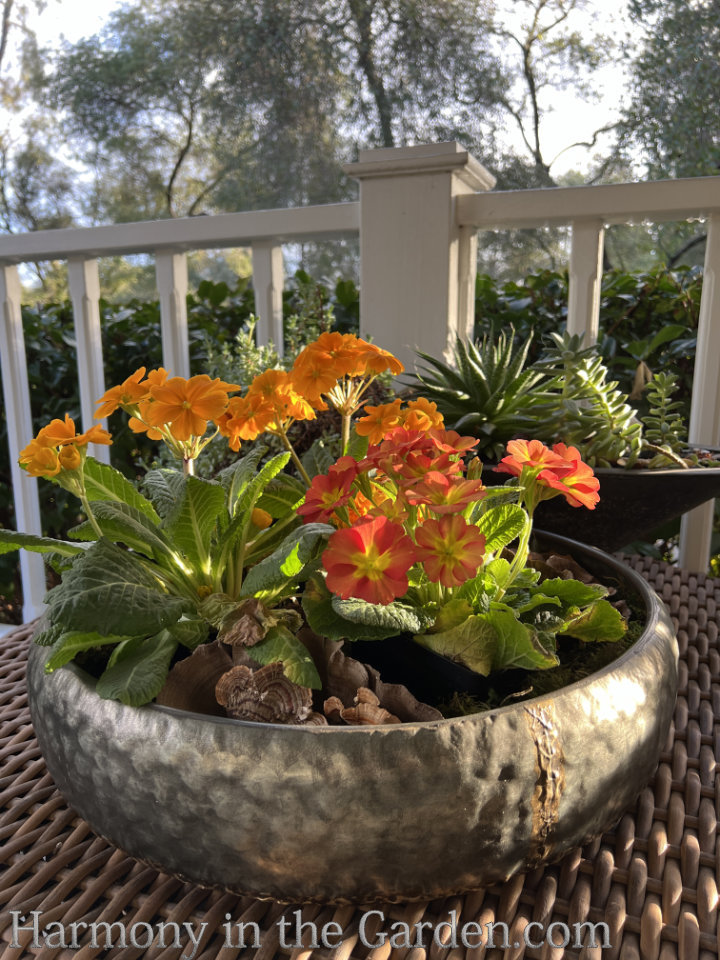
Before we’re done, I thought you’d enjoy this little tidbit:
In Hamlet, Shakespeare coined the phrase “the primrose path,” which refers to choosing the pleasurable and indulgent path or the easier option of least resistance.






14 Comments
Hello from South Carolina USA
I am raising Primroses on my screened porch and they’ve done great. However it is now in the 90’s here and I’ve cut the wilted leaves back. My question is how much do I water them until fall when they hopefully come back?
Hello Pauline! I’ll admit, I’m not 100% sure I can answer your questions because even though we’re both experience a lot of heat (it’s been 105+ for the past 12 days here!) you have so much humidity, which I don’t have. Also, it depends on which species of primroses you’re growing. However, in my experience when my common primroses are done for the year, similar to yours, I continue to give mine water, just not a ton of it. Their roots are still alive and you don’t want them to completely dry out or they might die. And you don’t want to give them too much water, either, in case they develop root rot. I hope this gives you at least a little guidance? Thanks for stopping by!
I love primroses, thank you for highlighting this sweet flower. It amazes me that they come back after our hot, dry summers. I’m now on the hunt for the taller, red, yellow ones, the ‘Oakleaf’ variety, they are lovely!
On another note, what mulch do you prefer to use in our Zone 9 area that is easy to obtain?
Thanks for another wonderful article Rebecca!
Hi Vivian, I’ll definitely let you know if I see any of those cute little ‘Oakleaf’ varieties. Re: mulch, I like to use Hastie’s ‘walk on’ bark, which is a mix of fir and redwood, I believe. It has a more natural appearance which goes with all the oak trees and the overall environment in my garden. In small gardens (esp in the Bay Area) I’d use bark that was about 1/2″ at the largest. Any larger and it tends to look unnatural (or, the really large bark chips which I call ‘baked potato’ bark – ha!) Mini mulch is lovely right near the door where you can best appreciate it, but it tends to disintegrate and/or get blown away really easily (not to mention, it’s $$$)
I got introduced to primroses when we were living in SF and collected a ton for my garden from Half Moon Bay nursery. I’m now living in the Desert and they are no longer on my radar so imagine my surprise when my gardener showed up with a flat this winter and planted them in an empty bed as winter “annuals” — he had no idea what a lovely gift he was giving me. I’m going to miss them when they are gone but for sure they will not survive our summer heat. Great blog post as always!
Hi Joan, and what a lovely story. I’m so glad your gardener surprised you like that! You’re right, they’re not quite the plant for the desert (ha!) but luckily they’re giving you a few months of sweet and happy flowers!
Love, love, love Belarina primroses…on a mission to get every colour offered ❤️
Aren’t they gorgeous, Elaine? Just this afternoon I saw some at a nursery that were a pale pink. So pretty!
I am all in regarding Primroses! Digging Dog Nursery in Albion, CA has a nice selection. Here is a link to a Kennedy Primrose – not in stock but you might be able to talk with them.
https://www.diggingdog.com/plant.php/P-1948
One day I’ll be able to visit Digging Dog in person – what a dream that would be! Thanks for the link. I think I remember Patrick Fitzgerald was trying to get some nurseries to offer them which is how I was sent a batch to trial in the first place. Apparently it just didn’t work out which is why they’re nowhere to be found (at least that’s my theory) Your suggestion of contacting them is a good one and I just ight have to do that in hopes those little maroon-leaved beauties are out there somewhere…
I love my primroses. The are so reliable and the first to bloom in my sleepy winter garden. I love seeing how you group them and am thinking I need to get a few more!
Hi Joan – glad to hear there’s more primroses in your future 😉 I have an area of warm-colored primroses, and in another area of my garden are the purples and then a white patch. Love those little beauties!
You may want to correct the date of your upcoming webinar. According to the webinar site, it’s March 21. You say March 24 in your article above.
Love your posts and I’ve been looking for that double purple primrose. A friend and I first saw it in Seattle in 2020.
Hi Jan, so glad you’re enjoying my blog! I’ve seen that double primrose offered on several online sites, but they’re so much more expensive than if you can find them at the nursery! Hoping you can hunt one down because it’s a beauty and surprisingly tough. Thank you so much for finding the mistake! That’s what happens when I don’t have enough caffeine in the morning – ha!